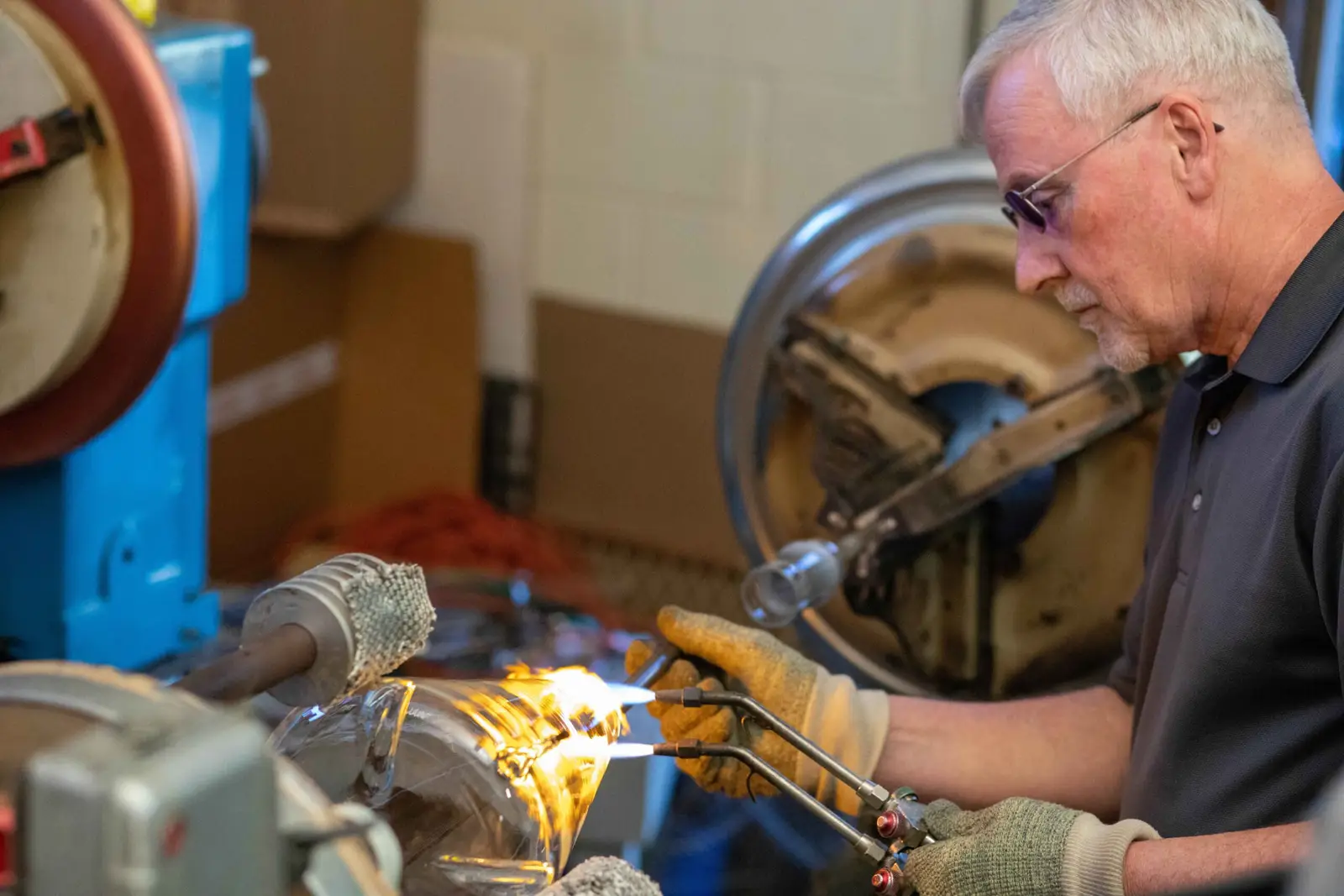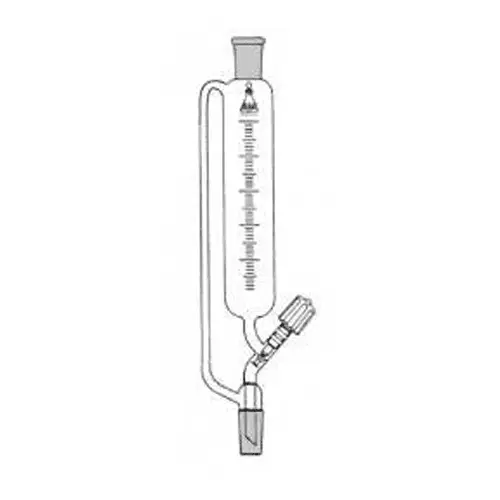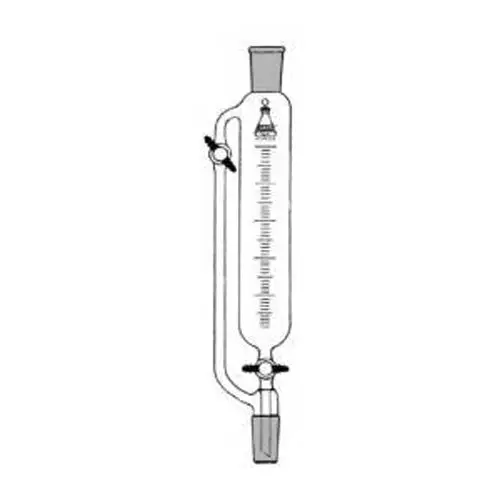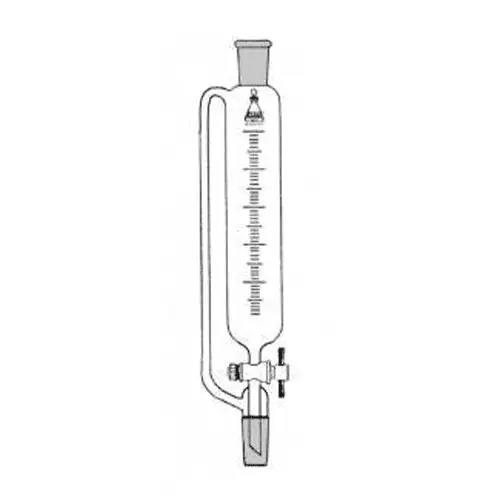At-Mar Glass has long been trusted by pharmaceutical companies, academic institutions, and research laboratories that demand precision-engineered glassware. Our addition funnel offerings reflect decades of glassblowing expertise, crafted entirely in-house to meet the exacting standards of advanced chemistry applications. Whether supporting complex syntheses or scaling research processes, our funnels combine reliability, customization, and rapid turnaround, making them the preferred choice for scientists who cannot compromise on quality.

















In advanced laboratory practice, an addition funnel is more than just a vessel—it’s a precision instrument designed to enable controlled reagent delivery into ongoing reactions. By minimizing pressure fluctuations and ensuring consistent flow, researchers can maintain stability across delicate systems, particularly when handling volatile or moisture-sensitive compounds. This functionality makes it indispensable in modern addition funnel chemistry, where reaction outcomes depend on careful regulation of variables.
Beyond its core role in synthesis, addition funnels are relied upon in pharmaceutical development, academic research, and industrial labs for processes where timing, temperature, and dosing accuracy directly impact reproducibility. Their value lies not only in enabling complex chemical transformations, but also in safeguarding the integrity of high-stakes experiments where consistency is paramount.
Different laboratory setups demand specialized designs, and addition funnels are no exception. The right choice depends on the nature of the reagents, the reaction conditions, and the sensitivity of the experiment. Below are three widely used variants and the roles they serve in advanced chemistry applications.
A powder addition funnel is designed for the safe and controlled introduction of solid reagents, particularly when dealing with hygroscopic or air-sensitive materials. By minimizing exposure to air and moisture, it prevents unwanted side reactions and ensures accurate dosing. This makes it indispensable in pharmaceutical synthesis, organometallic chemistry, and other workflows where reagent stability cannot be compromised.
The pressure equalized addition funnel ensures smooth reagent transfer by maintaining equilibrium between the funnel and the receiving vessel. This design eliminates pressure surges that could otherwise disrupt sensitive reactions, making it especially valuable in processes such as low-temperature cryogenic work or exothermic additions. For labs managing delicate kinetics or reactions under inert atmosphere, pressure equalization safeguards both accuracy and safety.
Although not a direct substitute for a traditional separation funnel, the separatory addition funnel is favored in systems that require precise liquid-liquid dosing. Its design allows chemists to handle immiscible solvents with greater control, making it a practical option in multiphase extractions or biphasic catalysis. In advanced workflows, this dual-functionality saves time while reducing the risk of cross-contamination between reaction stages.
For seasoned chemists, understanding the addition funnel vs separatory funnel distinction is essential to selecting the right tool for precise workflows. While both share a similar shape, their engineering and applications diverge in critical ways.
Designed for controlled reagent delivery, the addition funnel allows precise introduction of liquids or solids into an active reaction system. Its role is to safeguard kinetics, maintain equilibrium, and prevent sudden changes in temperature or pressure.
By contrast, the separatory funnel is built for liquid-liquid extraction, enabling the partition of immiscible phases such as organic solvents and aqueous solutions. Its stopcock design allows chemists to isolate compounds cleanly during post-reaction workups.
| Feature / Function | Addition Funnel | Separatory Funnel |
|---|---|---|
| Primary Purpose | Controlled addition of reagents into reactions | Separation of immiscible liquid phases |
| Flow Control | Steady dosing to maintain reaction stability | Stop-and-release for phase partitioning |
| Typical Use Cases | Temperature-sensitive or pressure-sensitive syntheses | Solvent extraction, purification steps |
| Design Focus | Prevents pressure fluctuations; precise dosing | Facilitates phase isolation and decanting |
| Common Lab Contexts | Pharmaceutical synthesis, organometallic chemistry, cryogenic work | Workups, purification, multi-phase reactions |
Addition funnels are manufactured in a range of industry-standard volumes, each tailored to specific workflows and reaction scales. From small-batch academic research to large-scale pharmaceutical synthesis, capacity selection plays a direct role in dosing accuracy, reaction kinetics, and experimental efficiency. At-Mar Glass not only provides these standard options but also offers the flexibility of custom volumes for unique laboratory demands.
A 100 mL funnel is ideal for microscale reactions and teaching laboratories where precision is critical but volumes remain low. Compact yet highly effective, this size is widely used in kinetic studies, exploratory syntheses, and pilot experiments.
The 250 mL size balances versatility with capacity, making it one of the most common standards in academic and industrial labs. It supports a broader range of reaction scales, offering enough volume for multi-step syntheses while still maintaining tight control over addition rates.
For larger-scale operations and more sensitive reactions, the 500ml pressure equalized addition funnel provides both capacity and stability. Its pressure-equalizing arm ensures uninterrupted flow even under demanding conditions such as cryogenic setups or inert-atmosphere reactions. This makes it a preferred choice for pharmaceutical development and industrial chemistry where reproducibility and safety cannot be compromised.
In addition to standard specifications, At-Mar Glass specializes in producing custom volumes tailored to exact project requirements. Whether scaling beyond 500 mL for industrial throughput or creating intermediate sizes for highly specialized experiments, our in-house glassblowing team provides precision manufacturing without outsourcing delays.
As both an addition funnel manufacturer and trusted addition funnel supplier, At-Mar Glass has earned the confidence of pharmaceutical companies, universities, and industrial research facilities nationwide. Our expertise lies not only in producing precision glassware, but also in tailoring each piece to the unique demands of advanced chemistry.
All of our funnels are made at our Kennett Square facility, where master glassblowers combine decades of expertise with state-of-the-art equipment. Because nothing is outsourced, every stage of production is under our direct control—from the selection of raw materials to the finishing of joints and stopcocks. This hands-on approach guarantees consistency, ensures that each funnel meets exacting tolerances, and provides customers with a higher level of quality assurance than mass-produced imports.
In research and production environments, downtime can be costly. At-Mar Glass is structured to deliver speed as well as quality, with many repair or replacement projects completed in just a few days. Whether you need a single funnel repaired over a weekend or a batch of new equipment expedited for an urgent project, our responsive service helps keep your timelines intact without sacrificing reliability.
Scientific innovation often requires glassware that goes beyond standard catalog items. That’s why we regularly produce funnels with custom capacities, unique joint sizes, or pressure-equalizing arms adapted for specific reaction conditions. Whether your work involves cryogenics, air-sensitive compounds, or high-throughput synthesis, we can design and fabricate a solution that integrates seamlessly into your experimental setup.
At-Mar Glass is more than a manufacturer—we’re a partner invested in your success. Our specialists take time to understand your needs, whether you’re ordering in bulk for a teaching lab or requesting a one-of-a-kind funnel for a novel process. This collaborative approach ensures that every piece we deliver reflects technical precision and reliability.
Even experienced researchers and procurement teams often have detailed questions when selecting or specifying laboratory funnels. Below, we’ve addressed some of the most common inquiries we receive about addition funnels, their variants, and At-Mar Glass’s manufacturing capabilities.
At a high level, the addition funnel vs separatory funnel distinction is functional: addition funnels meter reagents into an active reaction, whereas separatory funnels manage liquid–liquid phase splits via a bottom stopcock and careful interface control. Experienced users typically reserve addition funnels for kinetics-sensitive dosing and separatories for workup and purification.
Choose a pressure-equalized design when gas evolution, reflux, or sealed/inert systems could cause pressure differentials—e.g., low-temperature Grignard additions, nitrations, or dosing into a Schlenk-line setup. The equalizing arm stabilizes headspace, minimizing surges, cavitation, or backflow that would otherwise distort addition rates.
Powder funnels allow contained, incremental delivery of hygroscopic or highly potent solids, reducing exposure risk and ambient moisture uptake. Wide-bore throats, dust-limiting caps, and antistatic considerations improve charging accuracy and batch reproducibility—especially valuable with HPAPIs and air-sensitive organometallics.
Yes—common requests include non-standard capacities, custom taper joints (e.g., 14/20, 24/40, 29/42), jacketed bodies for thermal control, integrated thermowells, or modified equalization geometry for specific headspace constraints. We also offer calibration marks and PTFE hardware upgrades to match your SOPs and tolerance requirements.
Labs typically stock 100 mL and 250 mL for small-to-midscale work, with 500 mL and 1 L used for pilot or process-development runs. Selection should balance headspace, dose profile, and condenser/stirrer clearance; we can also produce intermediate or oversized volumes to align with existing reactor trains.
By enabling dropwise or ramped dosing profiles, addition funnels moderate exotherms, preserve stoichiometric fidelity, and reduce localized concentration spikes. This steadier mass-transfer regime often yields cleaner conversions, tighter impurity profiles, and more reproducible scale-ups.
Absolutely—pairing a pre-chilled funnel with a cryogenic bath and a fine-bore stopcock supports precise dosing at −78 °C and below, while minimizing thermal shock to the reaction mass. Thick-wall borosilicate and compatible joints further protect against stress under rapid temperature gradients.
Borosilicate glass (e.g., 3.3 expansion) provides chemical resistance and thermal stability across common lab conditions, complemented by PTFE stopcocks for low torque and solvent compatibility. Depending on the application, glass or PTFE stoppers and various joint standards can be specified.
At-Mar Glass is more than a vendor—we’re a partner committed to advancing your research with glassware you can trust. Whether you need standard addition funnels, complex custom builds, or emergency repairs turned around fast, our in-house team is ready to deliver. Call us today or reach out online to discuss your requirements.